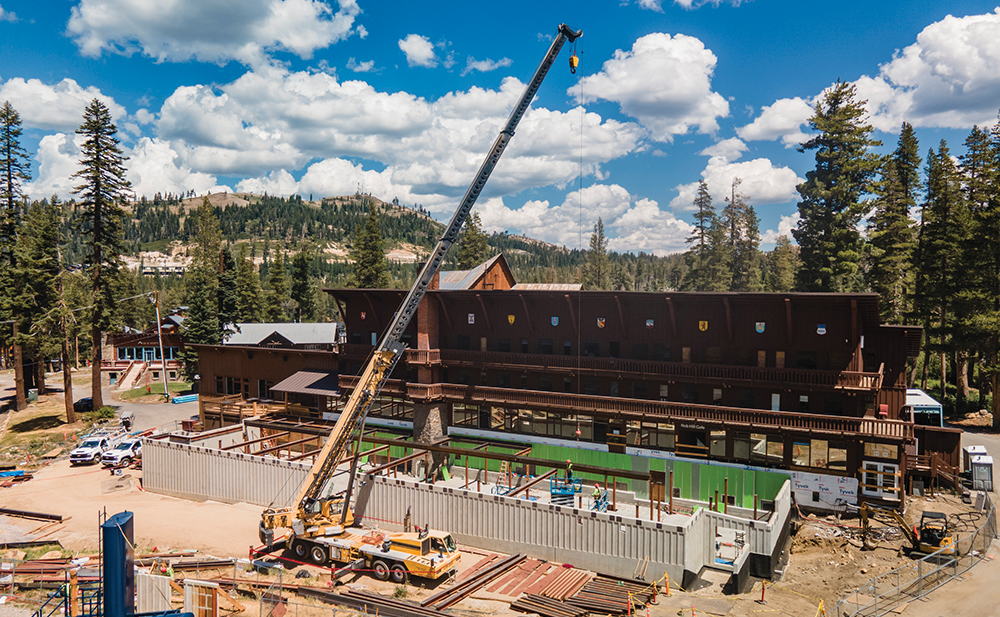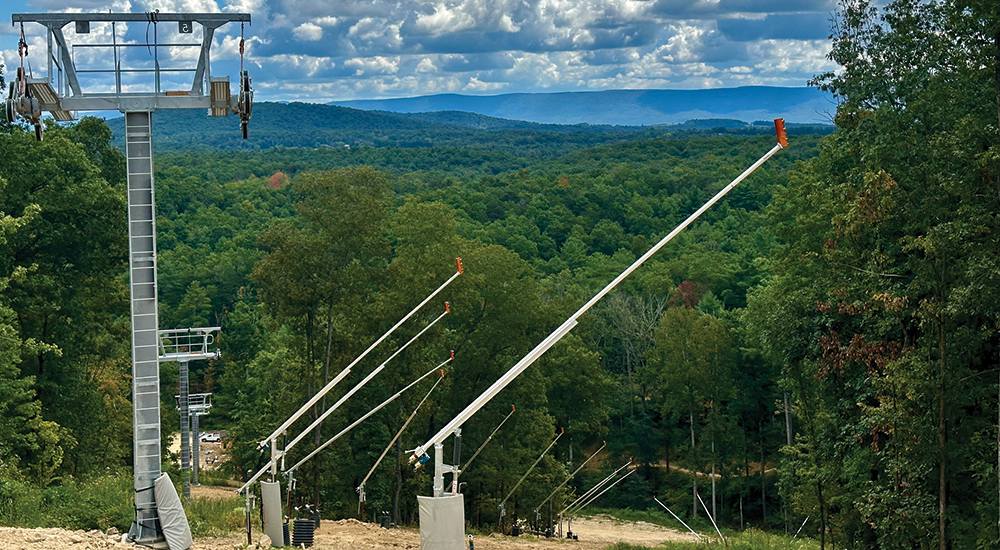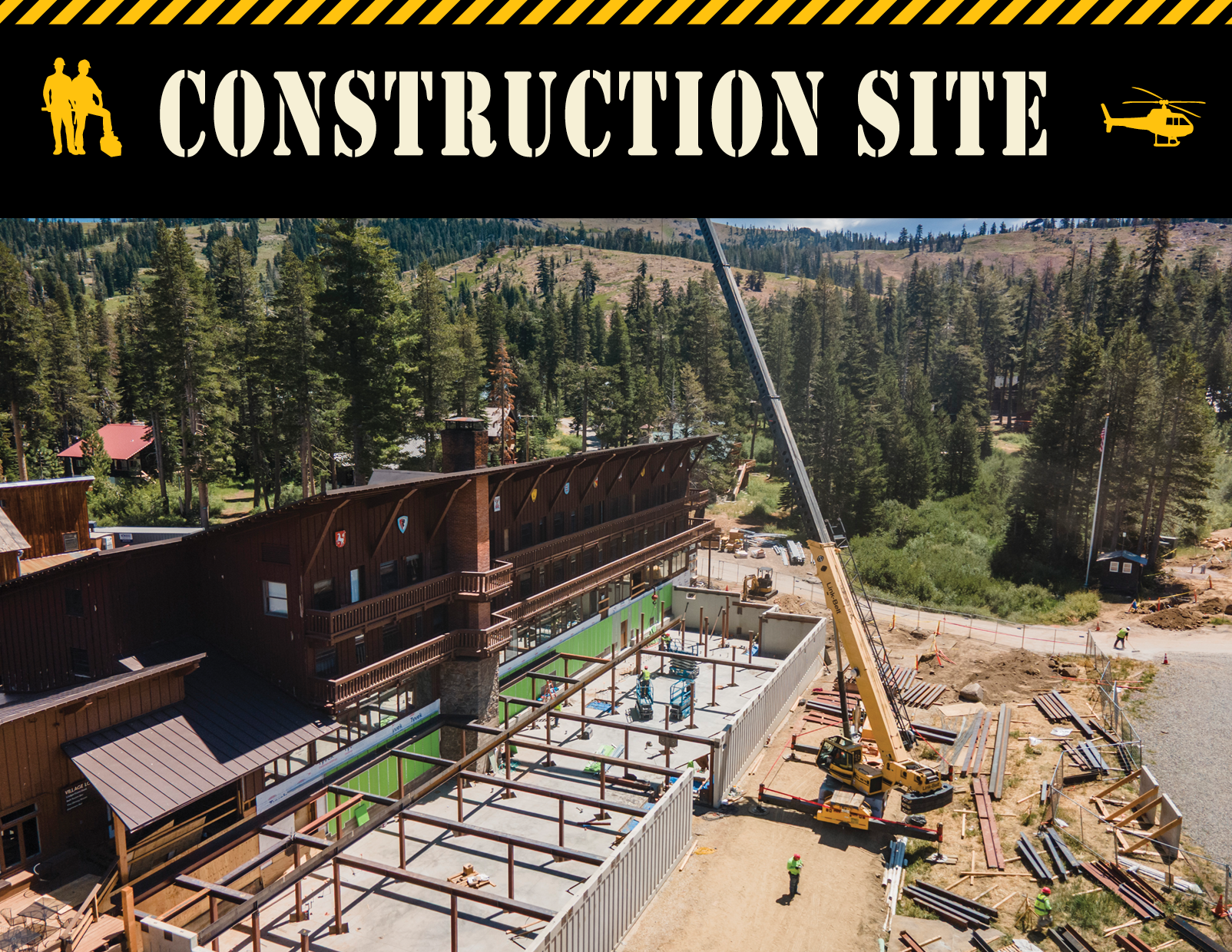Wachusett Mountain, MA
 Wachusett replaced its Polar Express detachable quad with a Doppelmayr six place this summer. The old lift accumulated tens of thousands of hours running both day and night for 31 years. The new lift will run 4,327 feet with a 946-foot vertical rise. While its 400 hp motor will move the same 2,400 skiers per hour, guests will enjoy a longer load interval and more comfortable chairs. The new lift’s 65 carriers will include auto-lowering and auto-locking restraint bars, fast becoming the gold standard for safety.
Wachusett replaced its Polar Express detachable quad with a Doppelmayr six place this summer. The old lift accumulated tens of thousands of hours running both day and night for 31 years. The new lift will run 4,327 feet with a 946-foot vertical rise. While its 400 hp motor will move the same 2,400 skiers per hour, guests will enjoy a longer load interval and more comfortable chairs. The new lift’s 65 carriers will include auto-lowering and auto-locking restraint bars, fast becoming the gold standard for safety.
Wachusett closed April 6 and began taking chairs off the old lift first thing the next morning. Doppelmayr disassembled the old machine, which Wachusett hopes to sell to another resort. Regional contractors Young Landscapes and Fall Line Construction assisted with destruction of old tower foundations and excavation for 13 new ones. “This project required a significant amount of earth moving,” said mountain operations manager Alex Arcangeli. “We used a combination of excavators, tracked dump trucks, and tri-axle dump trucks to move material.”
Wachusett kept guests fully informed on project milestones. Each week, the mountain posted both a “clueless construction update” by PR manager Chris Stimpson and an “official construction update” by Arcangeli. The clueless update, using descriptors like “giant spaghetti fork twirler,” consistently garnered more engagement while still (somewhat) informing guests.
The project faced several challenges through the summer, such as needing to over-excavate and reinstall engineered fill where pre-existing tower foundations stood. Several unexpected ledge outcroppings near the top of the mountain required blasting and additional rock needed to be hammered. Nonetheless, the project was tracking toward a Dec. 9 opening as of mid-September.
Sugar Bowl, CA

As Sugar Bowl turned 86 years young, ownership approved a transformative capital plan to revitalize the resort. This summer’s efforts focused on the base area with an expanded lodge deck, reimagined food and beverage, the addition of a modern locker facility, and removal of several unused buildings.
According to Sugar Bowl’s records, the Village Lodge deck last saw major updates in 1962, 23 years after its original construction. After removing the old deck, Clark/Sullivan Construction tackled the revitalization, doubling the size to 6,000 square feet and adding a second tier. While the old deck was Douglas Fir, the new one utilizes precast concrete panels and steel. The rebuilt deck will increase outdoor seating and include outdoor fire pits.
Inside, a total rebuild of the kitchen included a new 48-foot hot line. An expanded dishwashing area will reduce Sugar Bowl’s reliance on single-use items. The kitchen will also support two new dining venues called Yarrow and Terrace.
In previous back-of-house space underneath the new deck, Sugar Bowl created a state-of-the art locker facility. Nearly 300 lockers in both two- and four-person configurations will open this season with integrated boot dryers. Members will also enjoy a lounge and digital entry.
The last major task, clearing several old outbuildings from the base plaza, will create more space for skiers and prepare the way for a new gondola in 2026.
BCV Architecture + Interiors had a hand in all these projects as the design architect for the new locker room and Village Lodge deck, the architect of record for the kitchen, dining room, and bar rebuild and renovation, and master plan architect for the village and gondola work.
Mount St. Louis- Moonstone, ON

Doppelmayr and Mount St. Louis-Moonstone installed the area’s second D-Line detachable this summer, replacing two fixed-grip chairlifts. The outgoing lifts ran in sequence: the lower one accessed a novice slope; the upper, freestyle terrain. To serve both with the new Elfriede Huter Xpress six pack, MSLM developed a grading plan with Ecosign to remove material from the tops of the old lifts, lower the bottom of the new lift and utilize an extinct superpipe to build up the top terminal and extend three trails.
Moonstone’s in-house operations team disassembled the old lifts in just eight days, with one going to another Ontario ski area. Earthworks commenced at the end of May with four rock trucks, four excavators, and two to three bulldozers. The grade was lowered by 29.5 feet in one spot and raised the same amount in another. The top terminal pad required 350 loads of gravel installed in 6- to 8-inch lifts, compacted and verified by an on-site soil engineer. Some 2,200 feet down the mountain, the bottom drive terminal was built in a swamp, requiring fabrication of a temporary containment box to ensure drainage during foundation installation.
Doppelmayr initially planned to set all towers via crane, but a helicopter became available in late August, allowing Doppelmayr to set towers two through six in just 2.5 hours. The remaining two towers and both terminals were assembled by crane. As of mid-September, all steel was in place, and final grading, topsoil placement, and snowmaking installation were underway. Two of the three extended trails will be lit this winter with 82 new fixtures from Musco.
The Elfie Xpress will have in-station parking, a one-ring direct drive, raiseable loading conveyor, and locking restraint bars. It’ll also feature an AURO-CLD system that includes Mantis artificial intelligence at the loading and unloading areas, a first for North America. Operations manager Andre Huter said the system is designed to run the top return station without an operator, though current regulations don’t permit that. Instead, it will be programmed to assist the lift attendant, slowing or stopping the lift automatically if it detects an issue on the unload ramp.
With 365 feet of vertical rise and 46 carriers, the lift will move 3,000 pph at 984 feet per minute. As of mid-September, splicing of the haul rope was expected by the end of September, with commissioning set for November.
Bryce Resort, VA

Bryce Resort broke ground in mid-May on an ambitious backside expansion with four new trails and a Skytrac quad chair. Bryce completed preliminary trail clearing two years ago but waited to cut the lift line until ownership voted to proceed with the project last spring. Snowsports represent approximately 50 percent of the member-owned resort’s revenue and the expansion will boost trail capacity by 30 percent, particularly important at peak times.
Bryce opted for a turnkey installation with Skytrac. The new Lift 3 has five towers, bottom drive/tension, and 36 chairs. It’ll run just over 1,000 feet with a 250-foot vertical rise. While that may sound small, the impact on Bryce will be significant.
The expansion includes one green trail (the first true beginner trail on the mountain), two blue trails and one black trail, meaning a variety of skiers can ride the new lift and reduce congestion on the main mountain.
While Skytrac was installing the 60 hp chairlift, Bryce’s in-house team graded each trail and welded 15,000 feet of flood-controlled snowmaking pipe. The new pipe will feed 100 new HKD Impulse tower guns, all installed as of mid-September. Bryce relies heavily on snowmaking, so it placed guns closely on each of the four trails. Several areas required blasting. Both the lift and trail expansion were set for completion at the end of October. The expansion is set to open sometime in December.
Angel Fire, NM

Angel Fire worked on two new lifts this summer, the first of which will open this winter. The second, a six-place detachable, will take two years to build. Leitner-Poma of America manufactured both lifts and subcontracted Summit Install for installation.
The smaller of the two, Rakes Rider, is on the back side of the mountain. This fixed quad runs near an old double chair that closed in 1997. The new lift will follow a modified alignment with an all-new load point that improves access. Construction began April 1, a week after winter operations ended. Robins Construction of Colorado worked on clearing and grading, totaling just under 17 acres for both lifts. Robins used two Ponsse harvesters for tree removal along with a Caterpillar excavator, D5 dozer, and 30-ton haul truck. All Mountain Construction excavated tower foundations in steeper areas utilizing a Menzi Muck walking excavator.
Working on both lifts, Summit Install completed 28 tower foundations and four terminal foundations this summer. Rakes Rider’s top drive, top tension and bottom return terminals were set for installation in mid-fall, with a load test planned for Nov. 8. When complete, the 3,193-foot quad will move 1,400 pph with a 228 hp drive motor. The project also included 3,300 feet of new snowmaking pipe with six new stick guns and two TechnoAlpin TR8 fan guns.
An unusually wet summer created challenges with access to sites due to mud. With lifts on different sides of the mountain, it took a team effort to get so much work done in one summer. All foundations for the second lift, Angel Express, are complete. Installation is set to resume in April 2026. The 5,342-foot-long six pack will enhance mid-mountain access and support planned base area improvements. Initial capacity will be 1,800 skiers per hour with a 5.3 minute ride time. Tower and terminal installation is set for July 2026, with commissioning months before opening day 2026.
Snowmass, CO

Leitner-Poma and subsidiary Skytrac supplied two lifts to Snowmass this year. Both replace older equipment, part of a broad effort to modernize lifts across Aspen Snowmass. The larger of the two, a six seat detachable, replaces the Elk Camp Express. The outgoing quad served much of the mountain’s Bike Park, so Snowmass operated the lift until August 4. To compensate, LPOA and Snowmass began construction in May before the bike season opened. Some of the 22 tower foundations were completed prior to the bike park’s June 21 opening.
The bottom terminal was shifted away from the midmountain Elk Camp Restaurant to allow for a deck expansion there. This also allowed contractors to work on the new bottom return terminal midweek without disrupting the bike park. “Signage and fencing were helpful in educating guests on what was going on,” said VP of operations Susan Cross. The new Elk Camp chair will run 7,623 feet with 123 carriers transporting 2,800 pph. The lift’s 1,026 hp direct drive motor sits at the top station, elevation 11,325 feet, with tensioning at the bottom.
While bike park operations limited work at Elk Camp, Leitner-Poma’s crew focused on the second project higher up the mountain. The 1997 Cirque Platter was removed last spring due to its age and a difficult-to-maintain curve. In its place, a Skytrac/Leitner T-Bar will run a straight path from 11,730 feet in elevation to 12,520 feet. The 90 hp T-Bar will transport 800 skiers per hour.
Given its elevation, Snowmass took great care to minimize environmental impact, preventing erosion and sedimentation from the rocky soils and windswept tundra. Vehicle access was limited to a short list of approved machinery, with no more than six trips per day. Helicopters and a spider excavator were used whenever possible to minimize ground disturbance. Topsoil from the bottom terminal was flown up the alignment to cover both old and new foundation disturbances. Tower locations were chosen to avoid wetlands, and excavation was delayed until soils fully dried, reducing groundwater impacts.
Building two lifts above 11,000 feet was a team effort that included Aspen Snowmass, Leitner-Poma and Skytrac, Savage Excavation (excavation and grading contractor) and Maya Construction (operator houses). As of mid-September, Elk Camp was tracking toward an early November completion and early December opening, with Cirque commissioning scheduled for late November, opening late December.





